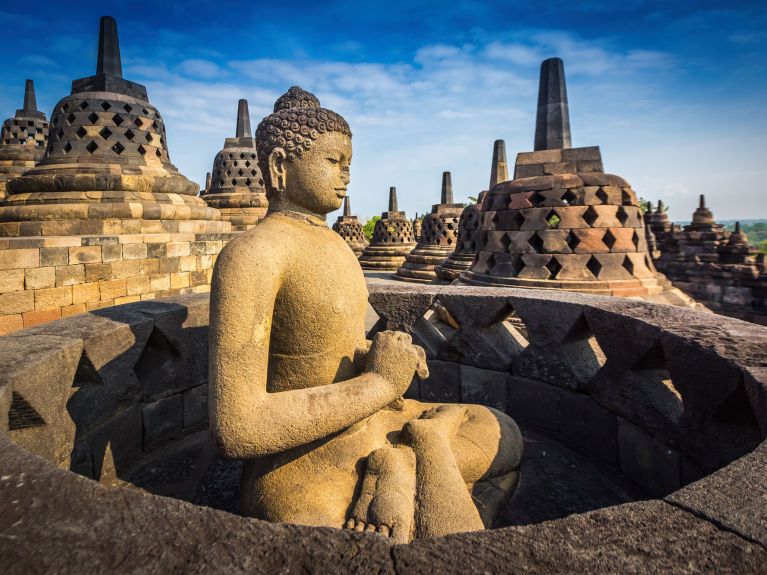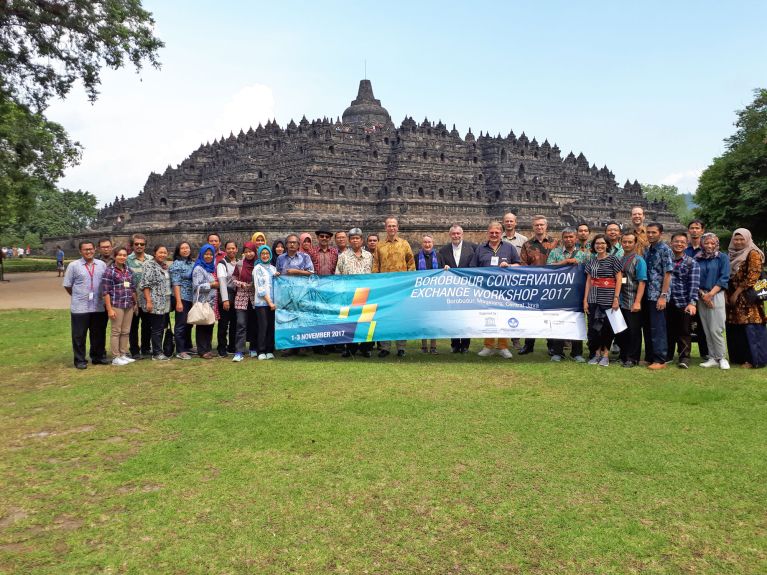World heritage site freed of ash
The Indonesian temple of Borobudur has been restored with German help and a great deal of effort.

The Indonesian temple Borobudur was built between 750 and 850 CE and is considered one of the largest and most important Buddhist buildings in the world. The complex was classified as a UNESCO World Heritage site in 1991. Following a volcanic eruption in the year 2010, the structure was entirely covered in a layer of volcanic ash. This had a negative effect on the elaborate stone reliefs and numerous sculptures of the Buddha. Restoration was urgently needed to save the temple from decay.

The German Federal Foreign Office’s cultural preservation programme has been co-financing a UNESCO research project for stone preservation in cultural monuments, in the context of which German experts Prof. Leisen and Dr. von Plehwe-Leisen developed modern techniques for analysis and conservation. Parallel to the conservation efforts, staff members were given appropriate training in the form of workshops and other educational measures. After 6 years of sponsoring the project, on 3 November 2017 it will be declared officially complete in the presence of representatives of the Indonesian Ministry of Culture and Education, the Borobudur Conservation Office, the German Embassy and UNESCO.
Around 2,800 cultural conservation projects in 144 countries since 1981
Borobudur stands for the religious pluralism enshrined in the Indonesian constitution like no other structure in the country, which is dominated by Islam. Alongside its religious meaning for the country’s Buddhist minority, the temple is one of Indonesia’s most important tourist attractions.
In the context of its cultural preservation program, the German Foreign Office has supported around 2,800 cultural conservation projects in 144 countries since 1981. This includes measures for the conservation of historical cultural assets, as well as German cultural heritage abroad. The local population, as well as local experts and partners, are involved in all of these projects and trained in the areas of conservation, restoration and digitization. A new Deutsches Archäologisches Institut Website bundles information and publishes news on its cultural preservation projects.